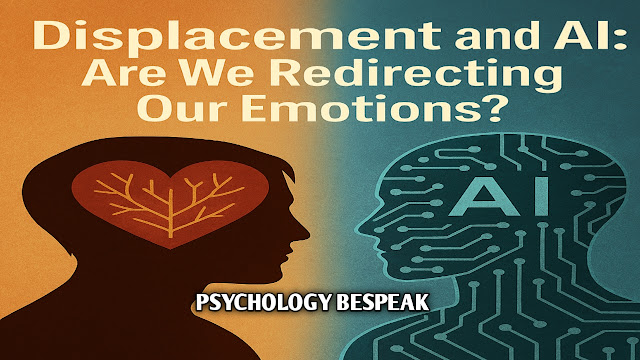MAIN DSM 5 CATEGORIES
Main DSM-5
categories are as following:
1. Neurodevelopmental Disorders
2. Schizophrenia Spectrum and Other Psychotic Disorders
3. Bipolar and Related Disorders
4. Depressive Disorders
5. Anxiety Disorders
6. Obsessive-Compulsive and Related Disorders
7. Trauma- and Stressor-Related Disorders
8. Dissociative Disorders
9. Somatic Symptom and Related Disorders
10.
Feeding and Eating Disorders
11.
Elimination Disorders
12.
Sleep-Wake Disorders
13.
Sexual Dysfunctions
14.
Gender Dysphoria
15.
Disruptive, Impulse-Control, and Conduct Disorders
16.
Substance-Related and Addictive Disorders
17.
Neurocognitive Disorders
18.
Personality Disorders
19.
Paraphilic Disorders
20.
Other Mental Disorders
21.
Medication-Induced Movement Disorders and
22.
Other Adverse Effects of Medication
23.
Other
Conditions That May Be a Focus of Clinical Attention
1.
Neurodevelopmental
Disorders: It comprises of Intellectual Disability (Intellectual Developmental
Disorder), Communication Disorders, Autism Spectrum Disorder, Attention-Deficit/Hyperactivity
Disorder, Specific Learning Disorder and Motor
Disorders
2.
Schizophrenia
Spectrum and Other Psychotic Disorders: It comprises
of Schizophrenia,
Schizoaffective Disorder, Delusional Disorder and Catatonia
3.
Bipolar
and Related Disorders: Bipolar Disorders Other Specified Bipolar and Related
Disorder Anxious Distress Specifier form
part of this group.
4.
Depressive
Disorders: DSM-5 contains several new depressive disorders, including
disruptive mood dysregulation disorder and premenstrual dysphoric disorder.
Other disorders are Major Depressive Disorder, Bereavement
Exclusion and Specifiers for Depressive Disorders
5. Anxiety Disorders: The
DSM-5 chapter on anxiety disorder no longer includes obsessive-compulsive
disorder (which is included with the obsessive-compulsive and related
disorders) or posttraumatic stress disorder and acute stress disorder (which is
included with the trauma- and stressor-related disorders).
a) Agoraphobia,
Specific Phobia, and Social Anxiety Disorder (Social Phobia)
b) Panic Attack
c) Panic Disorder
and Agoraphobia
d) Specific Phobia
e) Social Anxiety
Disorder (Social Phobia)
f)
Separation Anxiety Disorder
g)
Selective Mutism
6.
Obsessive-Compulsive
and Related Disorders: it includes,
Specifiers for Obsessive-Compulsive and Related
Disorders, Body Dysmorphic Disorder, Hoarding Disorder, Trichotillomania
(Hair-Pulling Disorder), Excoriation (Skin-Picking) Disorder, Substance/Medication-Induced
Obsessive-Compulsive and Related Disorder and Obsessive-Compulsive and Related
Disorder Due to Another Medical Condition, Other Specified and Unspecified
Obsessive-Compulsive and Related Disorders.
7. Trauma- and Stressor-Related Disorders:
It comprises of Acute Stress Disorder, Adjustment
Disorders, Posttraumatic Stress Disorder and Reactive Attachment Disorder.
8. Dissociative Disorders: Major
changes in dissociative disorders in DSM-5 include the following: 1)
derealization is included in the name and symptom structure of what previously
was called depersonalization disorder and is now called depersonalization/derealization
disorder, 2) dissociative fugue is
now a specifier of dissociative amnesia
rather than a separate diagnosis, and 3) the criteria for dissociative identity
disorder have been changed to indicate that symptoms of disruption of identity
may be reported as well as observed, and that gaps in the recall of events may
occur for everyday and not just traumatic events. Also, experiences of
pathological possession in some cultures are included in the description of
identity disruption.
9. Somatic Symptom and Related Disorders: In
DSM-5, somatoform disorders are now referred to as somatic symptom and related
disorders. The DSM-5 classification reduces the number of these disorders and
subcategories to avoid problematic overlap. Diagnoses of somatization disorder,
hypochondriasis, pain disorder, and undifferentiated somatoform disorder have
been removed. The new category are:
a) Somatic Symptom Disorder
b)
Medically
Unexplained Symptoms
c) Hypochondriasis and Illness Anxiety Disorder
d) Pain Disorder
e) Psychological Factors Affecting Other
Medical Conditions and Factitious Disorder
f)
Conversion
Disorder (Functional Neurological Symptom Disorder)
10.
Feeding
and Eating Disorders: it consists of:
a) Pica and
Rumination Disorder
b) Avoidant/Restrictive
Food Intake Disorder
c) Anorexia
Nervosa
d) Bulimia
Nervosa
e) Binge-Eating
Disorder
f)
Elimination Disorders
11.
Sleep-Wake
Disorders: it includes-
a. Breathing-Related
Sleep Disorders
b. Circadian
Rhythm Sleep-Wake Disorders
c. Rapid Eye
Movement Sleep Behavior Disorder and
d. Restless Legs
Syndrome
12.
Sexual
Dysfunctions: it comprises of
Genito-Pelvic Pain/Penetration Disorder and Subtypes
13.
Gender
Dysphoria Subtypes and Specifiers
14.
Disruptive,
Impulse-Control, and Conduct Disorders
a. Oppositional
Defiant Disorder
b. Conduct
Disorder
c. Intermittent
Explosive Disorder
15.
Substance-Related
and Addictive Disorders including Gambling Disorder
16.
Neurocognitive
Disorders
a.
Delirium
b.
Major and Mild Neurocognitive Disorder
c.
Etiological Subtypes
d.
Personality Disorders
17.
Paraphilic
Disorders and Specifiers.
REFERENCES:
§
Comer, R. J. (2004). Abnormal psychology. New York: Worth Publishers. (p. 594)
§
Farina, A. (1982). The stigma of mental disorders. In A. G. Miller (Ed.), In the
eye of the beholder. New York: Praeger. (pp. 596, 599)
§
Herek,
G. M. (2002). Gender gaps in public opinion about lesbians and gay men. Public
Opinion Quarterly, 66, 40–66.
§
Tinsley-Li,
S., & Jenkins, S. (2007). Impact of race and ethnicity on the expression,
assessment, and diagnosis of psychopathology. In M. Hersen, S. M. Turner, &
D. C. Beidel (Eds.), Adult psychopathology and diagnosis. Hoboken, NJ:
Wiley.
§
Hooley,
J. M. (2004). Do psychiatric patients do better clinically if they live with
certain kinds of families? Current Directions in Psychological Science, 13(5),
202–205.
§
Nolen-Hoeksema,
S. (1990). Sex differences in depression. Stanford, CA: Stanford UniversityPress
§
van
Praag, H. M. (2004). Stress, vulnerability and depression. New York:
Cambridge University Press.
§
Wakefield,
1992, 2006 Wakefield, M., Reid, Y., Roberts, L., Mullins, R., & Gillies, R.
(1998). Smoking and smoking cessation among men whose partners are pregnant: A
qualitative study. Social Science Medicine, 47, 657–664.
§
Szasz,
T. (1960). The myth of mental illness. American Psychologist, 15,
113–118.
§
Walker,
P. L. (2001). A bioarchaeological perspective on the history of violence. Annual
Review of Anthropology, 30, 573–596.




Comments
Post a Comment